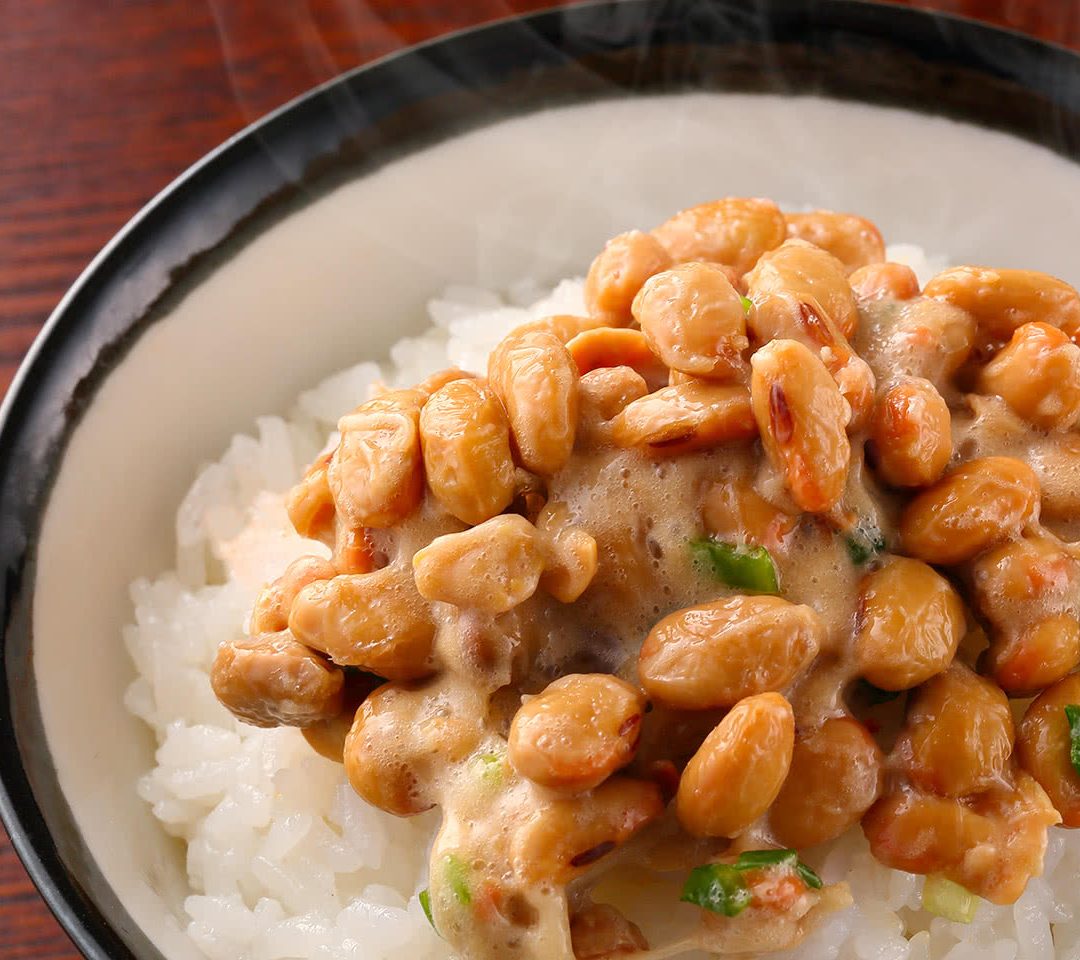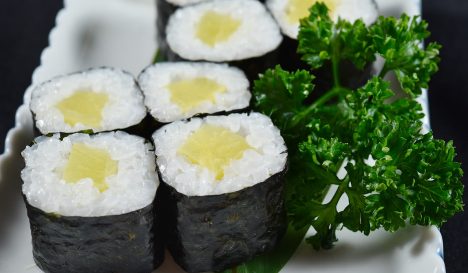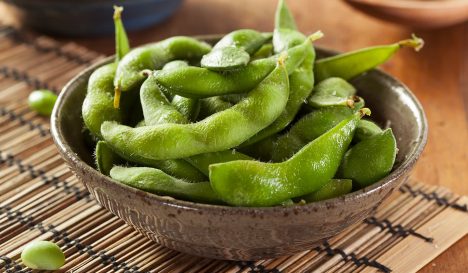Natto


Natto
-
Kitchen Japanese cuisine
-
Allergens Soybeans
-
Basis Soybeans
-
Dish type Side dish
-
For who Daredevils
What is natto?
Natto (pronounced ‘nat-TOO’) are fermented soybeans. The famous and notorious dish is made by wrapping cooked soybeans in rice straw and leaving them in a warm place to ferment. The natural bacteria on the straw, called bacillus subtilis or bacillus natto, convert the beans into natto within a few days. Nowadays, natto is made in factories under hygienic conditions and people often buy it ready to go. But some people still make it at home in straw.
Natto is full of fibre, probiotics and proteins and is therefore super healthy, but the slightly sticky, slimy texture and strong, almost cheese-like smell and taste are not immediately pleasant to Canadians. For many Japanese too, in the east and north of the country people are generally fond of it, while the rest of the country turns their noses up at it.
In the eleventh century natto was described for the first time, but it has probably been eaten since prehistoric times, as both soybeans and rice straw were present in Japan at that time.
Did you know?
No matter how unfamiliar the taste may be to Canadians, in Japan children get natto early. At some nurseries or playgroups it is sometimes handed out as a snack.
How to make natto?
Small dried soybeans are soaked overnight in water and then cooked or steamed – this takes 3 to 9 hours. While still warm, the cooked beans are mixed with a natto starter, which comes in powder form and is dissolved in water. They are then fermented for about 24 hours at 40 °C in a sterile container covered with cheesecloth and a lid. After another night in the refrigerator, the natto can be eaten.
If the natto is still prepared in the authentic way, rice straw is first heated to 65 °C to kill all bacteria except the required bacteria. Cooked or steamed beans are packed between the rice straw and placed in a warm place for at least one night.
To get the typical slimy effect, the fermented beans are stirred with chopsticks.
In Japan, people are not shy of the strong taste of natto but they try to balance it out with other strong flavours, such as mustard, wasabi or grated ginger. There is often a dashi sauce, which has the same function. Flavouring with soy sauce is also possible.
How to eat
In Japan, where natto is a case of love it or hate it, the side dish is extended to a full meal in various ways. Natto with steamed Japanese rice and chopped green onions, for example, is a popular breakfast dish and is sometimes also served with Korean kimchi, for an even more intense taste experience. Students like to eat it on toasted bread. Modern additions to the natto repertoire are natto with spaghetti and finely chopped natto in maki (sushi).
Also try
Another well-known Japanese dish made with fermented ingredients is miso soup.






